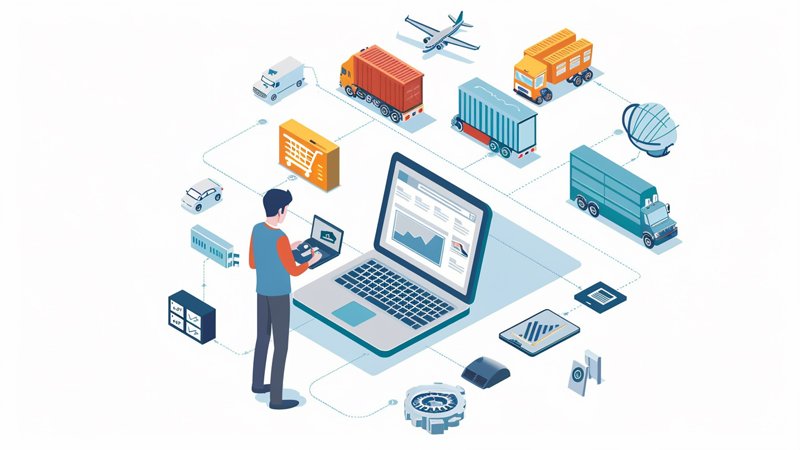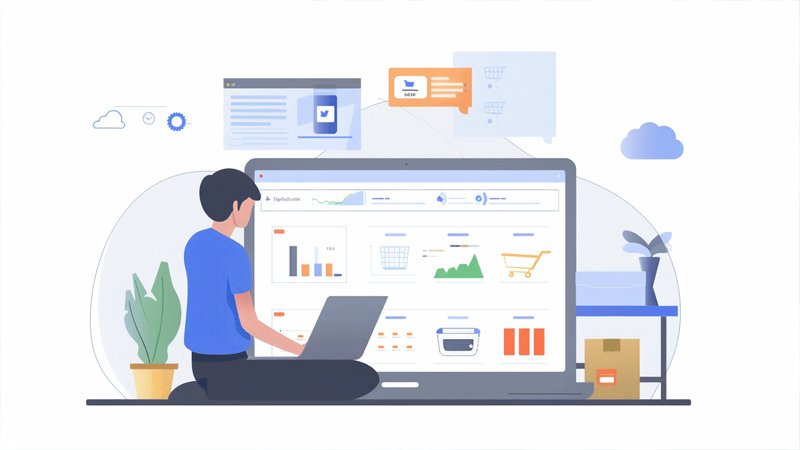
I remember the first time I considered importing from China without stepping onto a plane.
You can import remotely by leveraging sourcing agents, digital platforms, and reliable logistics partners. Clear communication, cost planning, and thorough research make cross-border trade possible, even from home.
It felt like a big leap at first.
What Solutions Are Available for Remotely Importing Goods from China?
Clarity on your options eases worries and keeps you from feeling overwhelmed.
Online marketplaces, sourcing agents, and digital trade shows are common pathways. Each offers varying levels of cost, convenience, and supplier transparency.

When I was new to importing, I worried about language barriers and lack of face-to-face trust. But as I dug deeper, I discovered entire ecosystems that make importing easy, even if you never leave your living room. Online B2B marketplaces1 (like Alibaba or Global Sources) connect you directly with factories. You can browse supplier catalogs, compare prices, and even chat through built-in messaging apps.
Meanwhile, digital trade shows2 have grown in popularity, especially when in-person events aren’t feasible. Vendors often share detailed product demos through webinars or video calls. This format lets you ask questions in real time, just as if you were strolling through a trade fair booth.
If you crave a more tailored approach, sourcing agents3 can act as your boots on the ground. They visit factories, verify credentials, and help negotiate deals. Although there’s a service fee, it saves you from time-consuming tasks. For me, this was a lifesaver in the early days, when I had little experience with factory audits or local customs.
No single solution fits everyone. You might start with a B2B platform for a low-volume experiment, then transition to a sourcing agent if the business grows. What matters is finding the path that matches your budget and risk tolerance.
How Can You Utilize Sourcing Agents to Achieve Importation Without Visiting China?
Sourcing agents bridge the gap and often make you feel like you’re right there with the supplier.
Pick an agent with proven factory connections and negotiation skills. This ensures you get verified products, fair pricing, and smooth communication.

My first sourcing agent felt like a secret weapon. She scouted multiple factories on my behalf, checking sample quality and forging relationships I couldn’t have built from home. Once she found a reliable manufacturer, we hammered out price terms together. By the time the goods arrived, I’d avoided the usual mistakes—like mismatched specs or hidden fees—because she had handled each detail meticulously.
But not all sourcing agents are created equal. Some specialize in certain product categories or geographical areas, while others offer a wide array of services. Before signing an agreement, I asked for references from previous clients. Their feedback told me about the agent’s work ethic, transparency, and speed of response. If an agent hesitates to share references, that’s a red flag.
It helps to outline your expectations right away. Do you need someone to handle everything from production oversight to shipping, or just factory selection? The clearer your instructions, the more value you’ll get out of their services. In my case, I requested regular updates—photos of product samples, a quick weekly progress chat—so I never felt out of the loop.
If you worry about quality assurance4, many sourcing agents have inspectors on standby. They’ll do pre-shipment checks and even random on-site visits. While these add-ons can cost extra, they’re worth it if you’re shipping high-value or complex goods. Think of a sourcing agent as your guide: they’ve walked these paths before and know where the pitfalls lie, making your import journey far more secure.
Which Online Platforms and Tools Can Assist You in Remote Procurement from China?
Digital platforms changed my perspective on import logistics.
Use reputable marketplaces, live chat tools, and project management apps. These resources streamline supplier searches, negotiations, and order tracking.

I can’t tell you how many hours I’ve spent scrolling through online marketplaces like Alibaba or Made-in-China, comparing suppliers side by side. Some platforms even offer trade assurance programs5, where payments are held in escrow until you confirm the product quality. It’s a safety net for newcomers nervous about transferring funds to an overseas account.
Communication tools like WeChat or Skype also play a huge role in bridging the distance. I often schedule quick video calls with suppliers to get a real feel for their operation. It’s not quite the same as walking through the factory floor, but it helps me gauge transparency and build rapport faster than endless email threads.
On the project management side, apps like Trello or Asana keep me organized. I create boards for each product, adding tasks like “sample request,” “price negotiation,” and “shipment booking.” Each card has checklists and deadlines, so I know exactly what’s done and what’s pending. This system is especially helpful if you’re juggling multiple suppliers or product lines.
For final order tracking, many freight forwarders provide online dashboards showing your cargo’s location in real time. If there’s a port delay or customs holdup, you’ll know immediately. And with a single click, you can share updates with team members or customers. By combining these digital platforms, I’ve made remote procurement feel almost like a local transaction.
What Strategies Can You Implement to Manage Cross-Border Logistics and Distribution Effectively?
Logistics felt like the hardest piece of the puzzle to solve remotely—until I found the right tactics.
Partner with reputable freight forwarders, plan shipping routes carefully, and track packages throughout transit. This approach cuts downtime and reduces unexpected costs.

In my early days, I underestimated how complex shipping could be. Suddenly, I was juggling container bookings, customs paperwork, and port schedules. A reliable freight forwarder6 made all the difference: they handled the maze of regulations, found the best shipping rates, and even flagged potential issues before they turned into delays.
Selecting a freight forwarder isn’t just about the lowest quote, though. Look for one with proven expertise in your industry. If you’re shipping fragile electronics, you need someone who knows how to handle special packaging and safety requirements. Plus, an experienced forwarder can help you decide between air freight (faster but more expensive) and sea freight (cheaper but slower), based on your budget and timelines.
Another key strategy is staging your inventory. If you’re importing large volumes, you might choose to split shipments among multiple carriers or arrival times to spread out risk. This can be especially valuable if your goods are seasonal or if you’re testing new markets and don’t want to overload your warehouse.
For distribution, consider whether you’ll handle it yourself or outsource to a fulfillment center7. Outsourcing can simplify operations, especially if you’re selling through online marketplaces with strict shipping deadlines. Fulfillment centers handle picking, packing, and returns, freeing you to focus on marketing or product development.
Of course, technology ties it all together. Real-time tracking apps and logistics dashboards offer a bird’s-eye view of where each package is. If a shipment gets stuck in customs, you’ll know right away and can address the issue quickly. By blending these strategies—solid partnerships, careful planning, and ongoing visibility—you build a logistics flow that works seamlessly, even from thousands of miles away.
Conclusion
Remote importing is doable with the right tools, the right allies, and a bit of proactive planning.
-
Explore the advantages of B2B marketplaces to streamline your importing process and connect with suppliers effectively. ↩
-
Discover how digital trade shows can enhance your importing experience with real-time interactions and product demos. ↩
-
Learn how sourcing agents can simplify your importing journey by providing local expertise and support. ↩
-
Discover effective quality assurance practices that can help you avoid costly mistakes in your sourcing process. ↩
-
Explore how trade assurance programs can protect your transactions and enhance supplier trust. ↩
-
Explore this link to understand how a freight forwarder can streamline your shipping process and save you time and money. ↩
-
Learn about fulfillment centers and how they can simplify your logistics operations, especially for e-commerce businesses. ↩




